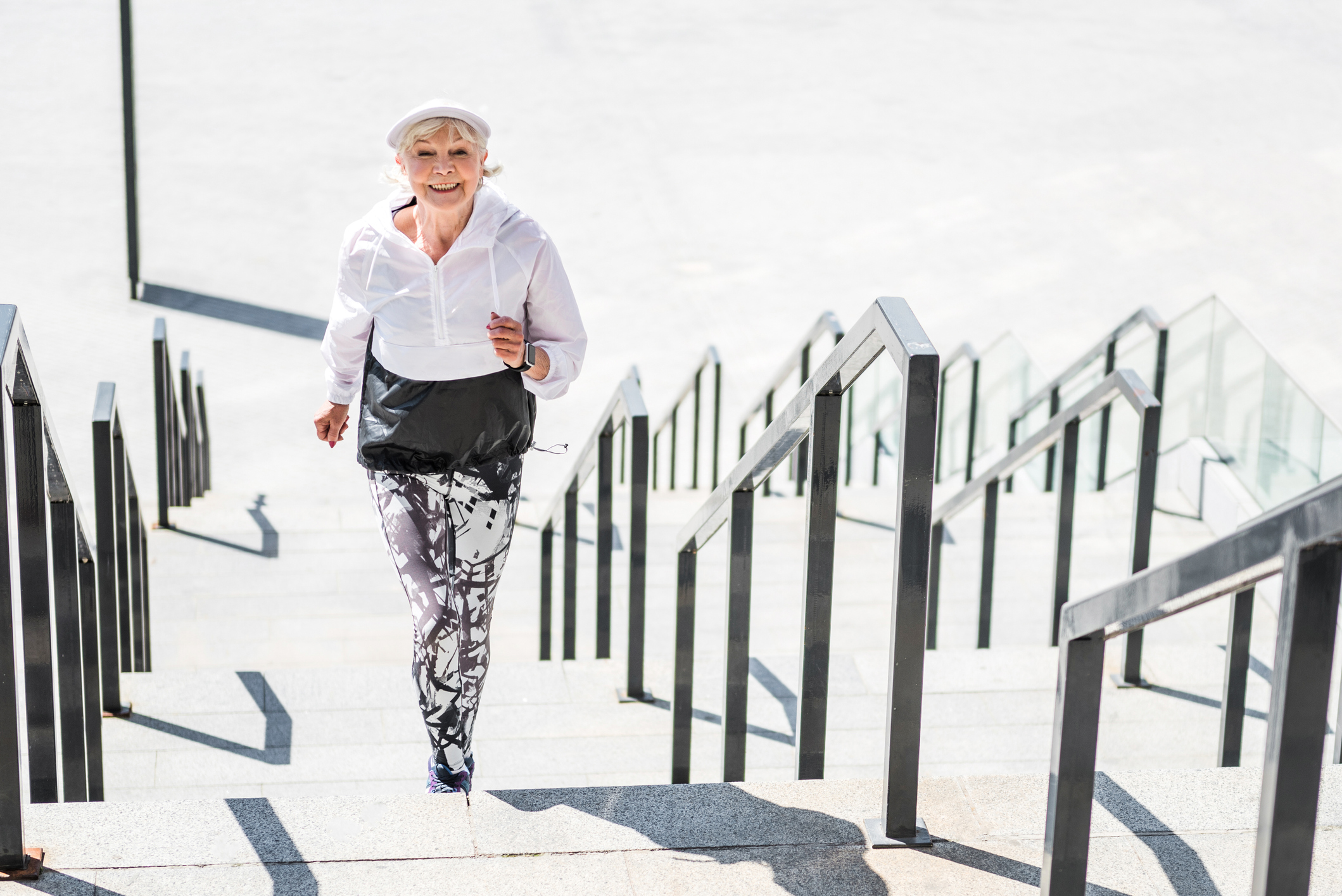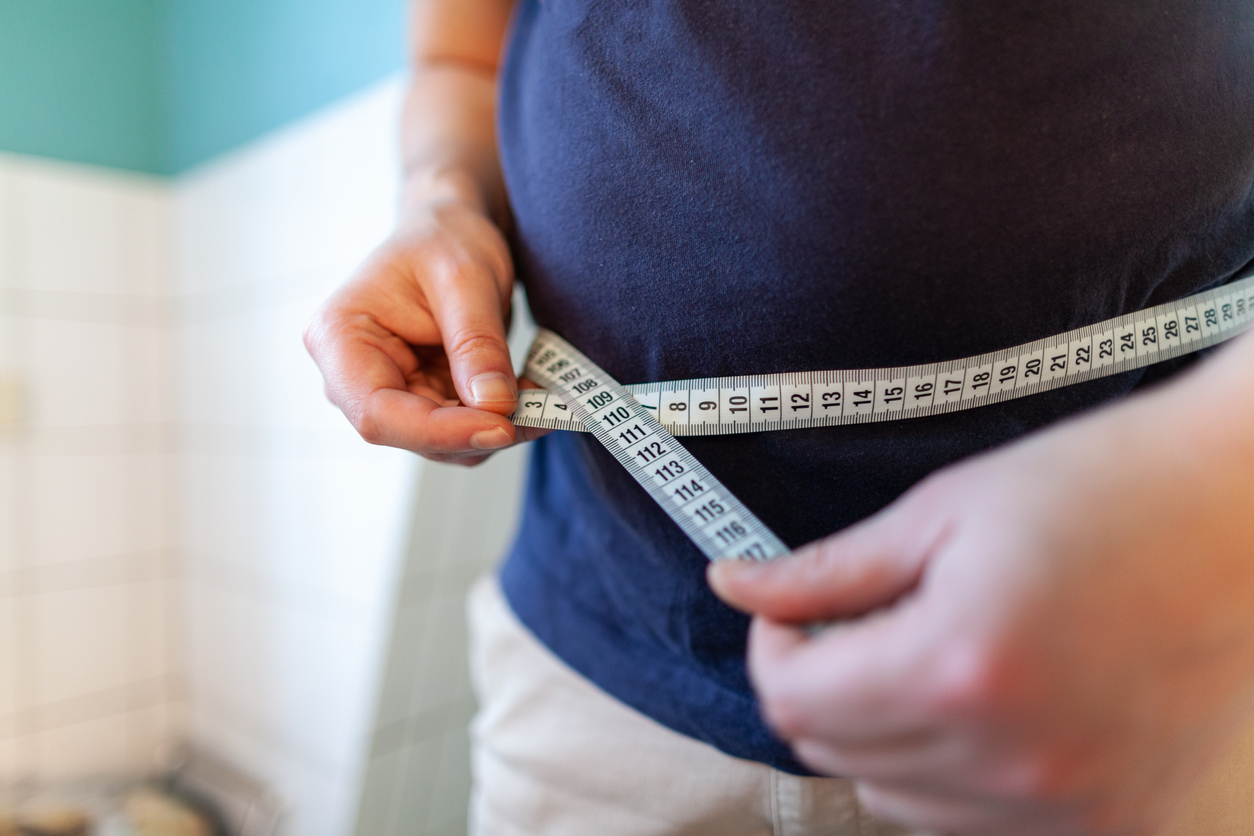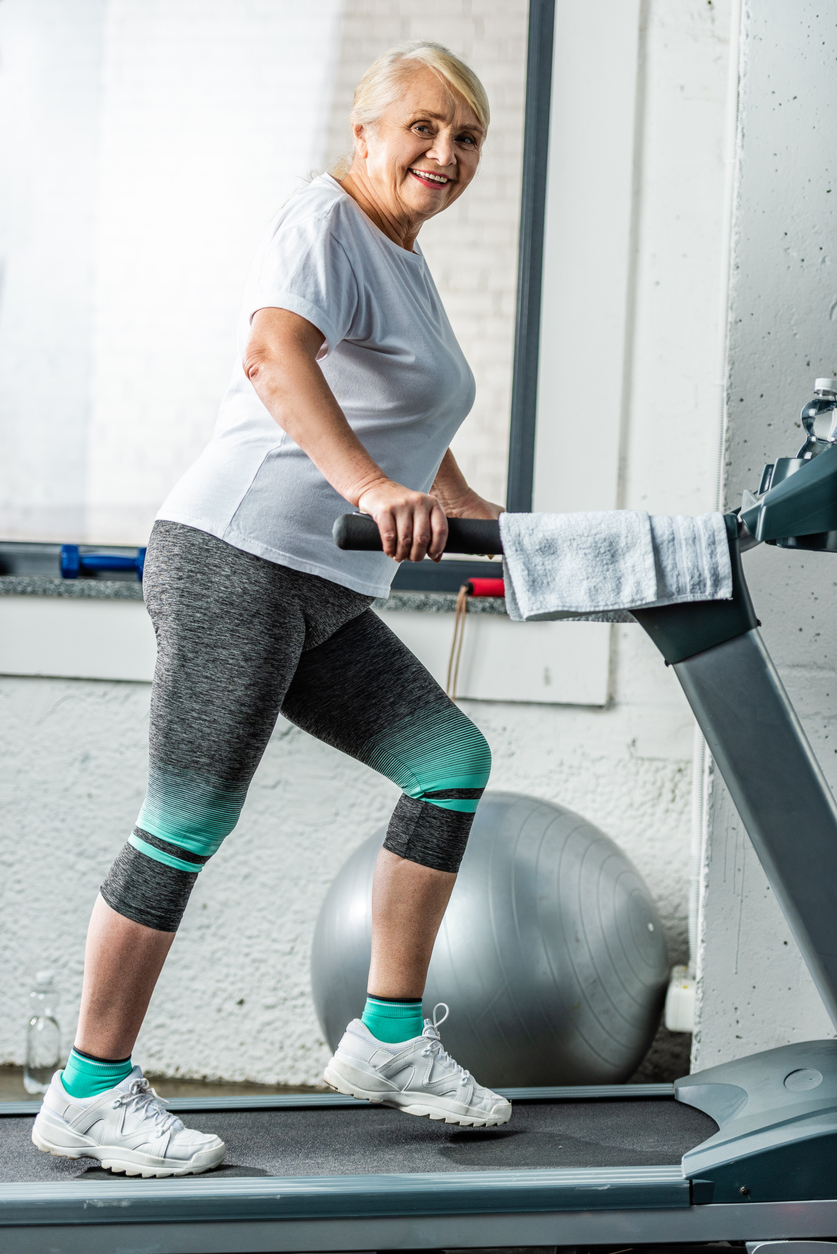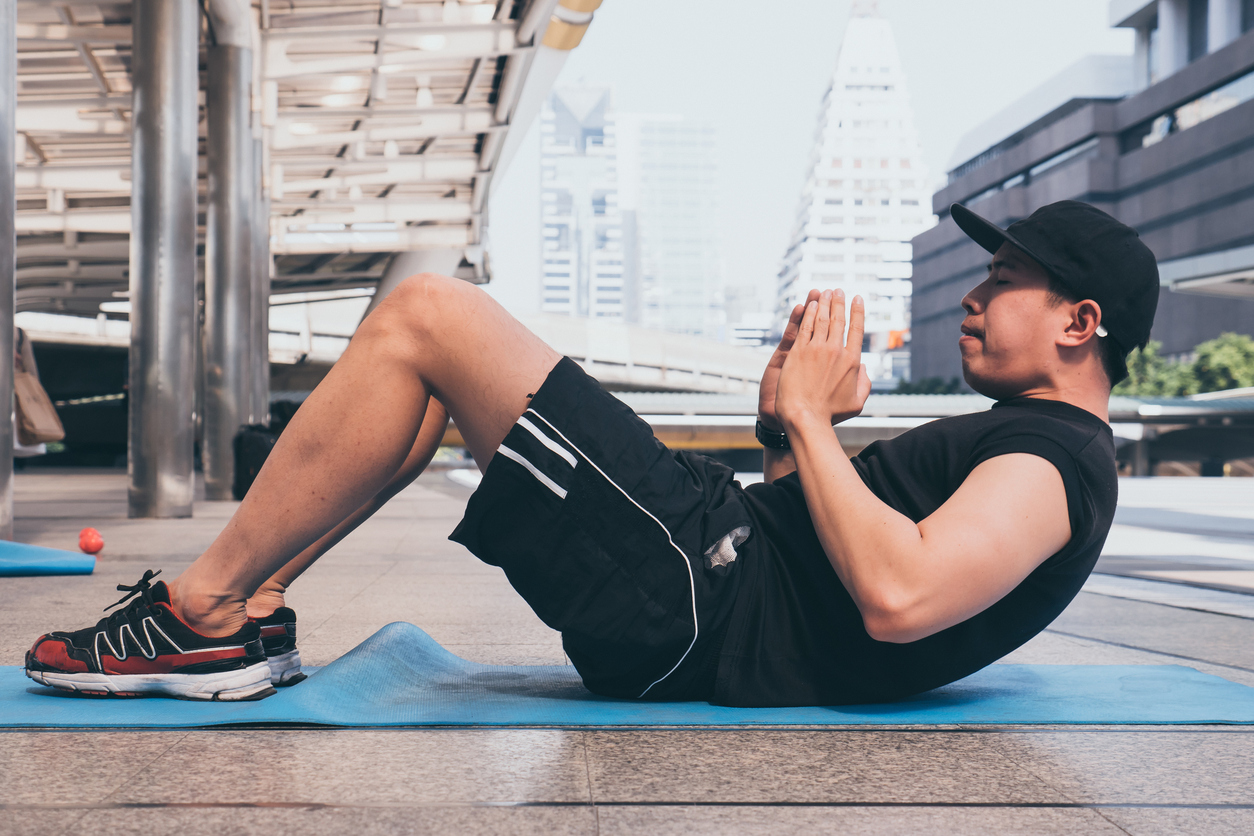
TIME WASTER OF THE MONTH: ABDOMINAL CRUNCH
Perhaps forty years ago the abdominal crunch (AC) was originally promoted as being a “safer” alternative to the classical sit up exercise. It’s still a popular “core training” exercise today, but I haven’t used it for my clients in many years and I also can’t remember the last time I’ve seen the fitness trainers I rub shoulders with use it either.
So why is the AC still so popular? Besides ignorance or disregard for the actual functions of “the core” (mid-section of the body), the appeal seems to be accessibility – nearly everyone can do an AC. The key point of this post, though, is the AC is not worth doing, particularly if you’re an over-50 adult or senior.
Like the dumbbell triceps kickback I’ve previously posted about, seeing an exercise performed for years doesn’t make it a “good” or even a “so-so” exercise. The AC is, in fact, a time waster or worse, because it doesn’t help you move/function better or reduce wear &tear on your joints/tissues or enhance and improve posture/alignment.
ABDOMINAL CRUNCH LIMITATIONS
The AC activates the most superficial abdominal muscle, the rectus abdominis, to produce spinal flexion. However, in the upright standing/sitting position, gravity actually produces this movement without rectus abdominis activation, so conditioning with an AC is functionally irrelevant 99% of the time. More importantly, the AC doesn’t address the actual function of the rectus abdominis in real life, which is to prevent spinal extension (bending backwards).
Take a look at the headline photo above and rotate it 90 degrees in your mind so the head is vertical – what position do you see? It’s the sitting position with extremely poor posture – head forward, chest caved in, shoulder blades pulled apart and forward – a sitting position most of us have already spent a lifetime in and which is known for negative effects on health, function and posture (see here for my blog post on sitting). It’s counterproductive for seniors to re-enforce this terrible position/posture in their fitness training! Seniors should always look to avoid the sitting position – especially for everything related to fitness in general and training to improve function and movement in particular. If you want to age better, look for every opportunity to enhance posture and positional alignment – a good place to start is the simple 7- Point Alignment Exercise I’ve previously posted on.
So take another look at the headline photo and consider: would you like to stand up from sitting or squat or climb stairs or walk/run or pick up a heavy or unwieldy object with that posture? I hope not. You’ve no need to be strong in that position unless you’re an MMA fighter – strength gained in that position is basically worthless for real life tasks, actions and movements.
ESSENTIAL CORE FUNCTION
The core is really much more than the superficial abdominal muscles. It covers everything from shoulder blades to hips/pelvis – basically everything but the extremities.
For most of us the core doesn’t need to be particularly “strong”, but it does need to work automatically (reflexively) when we need it –which is all the time for all kinds of tasks. For seniors, every feet-on-the-ground functional activity or movement pattern is “core training”! Things like sit-to-stand and climbing stairs require a high degree of core stabilization to perform in a healthy, joint/tissue respecting manner.
A primary function of the core is stability of the spine and pelvis by two main actions: 1) stabilizing each segment of the lumbar spine to prevent unwanted motion from occurring and 2) support of the global spine through static muscular “bracing” action. A properly functioning core also allows for efficient breathing as well as good continence.
Good core function optimizes efficient force transfer through the body by minimizing energy “leaks”. A stable core also efficiently links upper and lower extremity actions and reduces wear & tear on joints/tissues. These functional outcomes are extremely important the weaker you are – force transfer is what has to happen when you go from sit to stand, for example. Seniors have less physical margin for error (see here) because their joints and tissues are not in perfect condition, so for seniors it’s important to have optimal core function to help reduce wear & tear on joints and tissues.
The functional core has deep and superficial elements. For stability, efficient movement, and reduced wear & tear of joints/tissues, the deep core needs to activate automatically (reflexively) before your extremities move or your body resists an outside force. Enhancing and facilitating this reflex deep core activation is job-one of functional core training.
TRAINING THE FUNCTIONAL CORE FOR BEGINNERS
The exercises below are particularly important if you’ve ever had abdominal surgery, given birth, had back pain or spent a lot of time sitting, because chances are you might have sub-optimal core function.
These exercises are not about strength development – they’re really more about “activation” or” facilitation”. You don’t have to spend hours on them – just make sure you go through each step and spent a little time improving your skills on each one – it will pay dividends for movement and more advanced core training. One of the most important aspects of senior fitness is finding the appropriate place to start with movements or exercises. By becoming skilled with the exercises below you help insure a foundation for core training in particular and senior fitness training in general – and you will need some of these tools if you plan to safely use a dumbbell, kettle bell or even your body weight for resistance exercises or improving functional movement skills.
BREATHING: The first priority of core training is to enhance and develop diaphragmatic breathing because proper breathing facilitates the reflexive action of the deep core. A simple method is a technique called “crocodile breathing” developed by Gray Cook, PT, which involves lying prone and practicing diaphragmatic breaths. See here for a quick video introduction and you can Google “crocodile breathing exercise” for more videos and info.
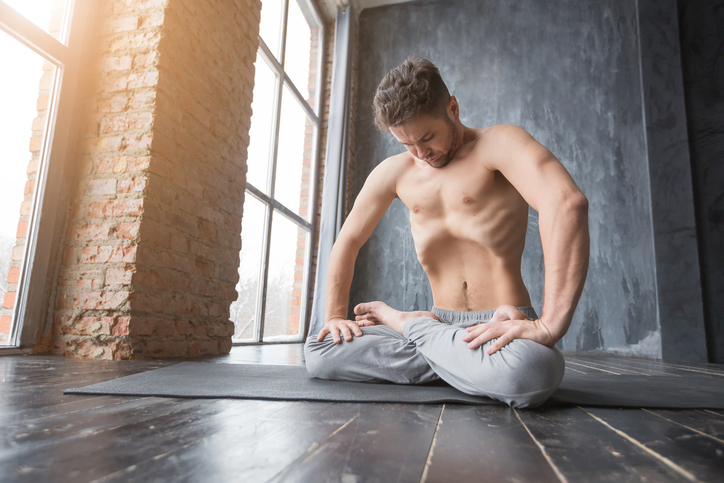
ABDOMINAL DRAWING IN: Also called “abdominal or tummy vacuums”, this just means drawing your navel toward your spine. Look at the photo alongside for an extreme example of “drawing in”. When you “draw in”, your muscular effort does not need to be intense – some activation and abdominal wall movement is all you need. Any position is acceptable except sitting (see above), but I like to perform this in standing or kneeling while maintaining proper posture. Start with tummy vacuums of just a few seconds each and maintain your breathing while performing.
PELVIC FLOOR WORK: This means engaging and activating your pelvic floor muscles as you would to stop urine flow – often called Kegels. Much info is available about Kegels – do your homework and become familiar and proficient with them – avoid performing them in the seated position if at all possible (see above).
GLOBAL ABDOMINAL BRACING: This means activating and firming your abdominal muscles to form a firm hard shell – like you would if someone was about to punch you in the stomach. Your muscular contractions do not need to be intense – some mild to moderate firmness is all you need. You can place your fingers on your abdominal wall to verify firmness. Any position is acceptable except sitting; I like standing or kneeling, but only with good posture. Start with abdominal braces of a few seconds each and maintain your breathing while performing.
DOUBLE OR TRIPLE ACTION WORK: This just means combining drawing in, Kegels, and global bracing into one concurrent activity with simultaneous breathing and good posture. Muscular contractions do not need to be intense. This option is more challenging, but worth trying if you’ve mastered all three above by themselves. Don’t get discouraged if you can’t master this – take your time – and try two at a time first.
INTERMEDIATE FUNCTIONAL CORE TRAINING
Intermediate functional core training focuses on linking upper and lower body movements through a firm and stable core and preventing spinal movement when external forces are applied to or through the body. These exercises are often called “Anti something” because the body is subjected to a force (often gravity) which would cause the spine and trunk to bend in a particular direction, but the goal is instead to remain stable and firm through the core.
Next post I’ll probably cover some thoughts on these “anti exercises” with an eye toward senior fitness.

